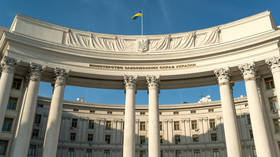'Chernobyl' is a blast of a TV series – but don’t call it ‘authentic’

Building film sets out of old Soviet buildings is easier than understanding the people who inhabited them – and the hit HBO show doesn’t grasp either why the nuclear accident was allowed to happen, or the heroism that followed.
Authenticity is not an essential virtue even for a docudrama, but it has been one of the main selling points of Chernobyl, the five-part mini-series that is currently the highest-ever rated TV program on film database IMDB.
Now, my qualms aren’t with the factual inaccuracies, the creation of Emily Watson’s fictional female scientist in place of the thousands of women actually involved, or the squeezing of such a grand-scale, multi-faceted story into what is, for the most part, a disaster film with two leads.

All of this artistic license could have been acceptable if only a higher truth had been preserved. But Chernobyl is fundamentally phony.
Because for all his strengths as a dramatist and thousands of hours of earnest research, New Yorker Craig Mazin, who wrote and produced the show, does not have an accurate mental picture of Soviet society on the edge of Perestroika.
And this is important. The reason Chernobyl struck the USSR so deeply wasn’t just the invisible terror of radiation, but how every stage of the catastrophe – from the flawed reactor design, to its shoddy construction, the carelessness and obstinacy of its staff, the cover-up afterwards, and the human cost – perfectly embodied the pathological deficiencies of a soon-to-collapse Communist order. April 26, 1986 was a systemic disaster, the harbinger of seismic change.
But there are no Soviet people in Chernobyl – and I am not talking about the British accents.
Mazin’s party officials are more like sullen gangsters protecting their own patch – they bully, shout, laugh ostentatiously, and bang their fists on the table. Stellan Skarsgard’s senior cabinet minister threatens to throw Jared Harris’s renowned academic off a helicopter, then to shoot him, but the conversation is as implausible as it would be if it were shown between Vice President George H.W. Bush and physicist Richard Feynman, to pick two contemporaries.
In real life, it was a disaster of consummate elite bureaucrats, who spoke to each other in a mix of déclassé party jargon and that matter-of-fact Russian frankness. The shortcomings of these people, almost all of whom thought they were doing the right thing, was not cartoonish villainy – but a callous sense of careerist self-preservation, a distancing from human suffering, wrong priorities, and an unwillingness to challenge the system. And in skilful hands the chilliness of the Soviet apparatchik could have been every bit as sinister and tragic as the scenery-chewing on display.
Similarly, the ordinary Russians tasked with the dirty and dangerous jobs are shown either as patriotic naïfs stirred by speeches, or independent-minded salt-of-the-earth types. But it was neither one nor the other. Other than the very first firefighters, the hundreds of thousands of Soviets involved in the clean-up were broadly aware of the risks they faced, but they went along anyway. Many went with fear, others with a sense of duty, but most complied simply because they lived in a totalitarian state, in which if the government tells you to do something, you do it. The most jarring scene is a Soviet minister bargaining with coal miners at gunpoint to persuade them to dig a tunnel under Chernobyl. Moscow mandarins did not negotiate with those 10 rungs below them – they sent down orders and didn’t need bullets to enforce them.
Once again there is drama in the get-on-with-it heroism of people who were thrown at the problem like faceless numbers, but it requires a more sensitive approach.
These elements of Soviet life may seem like the background to the central human stories, but in fact they dictated how each scene shown in Chernobyl unfolded in real life. And although occasionally the show hits upon the right note, perhaps when it sticks closest to a verbatim recreation, it does not seem to realize it. Most of the time, those involved act wrong on the wrong motivations, talk about the wrong things, and say them in the wrong order with an alien cadence that is more than just a different language.
Also on rt.com Chernobyl 30 years on: Reliving horror of world’s worst nuclear accidentLike an English upper class drama, staged by an Italian who grew up in his own culture and doesn’t speak the language, starring Italian actors, the whole thing feels off, ersatz. The mostly convincing sets show up the inauthenticity of the content.
This is not about defending my own cultural turf. Foreigners have every right to write about Chernobyl, and post-Soviet filmmakers are welcome to try and show that they remember the era better themselves through their own conflicted legacies and agendas.
But a caution: you are not REALLY learning about the Soviet Union or Russia or Ukraine from Chernobyl. And if you do want to dig through the testimonies and videos and books, there exists for you a story that is no less harrowing, but perhaps deeper and more involving.
By Igor Ogorodnev
Igor Ogorodnev is a Russian-British journalist, who has worked at RT since 2007 as a correspondent, editor and writer.














